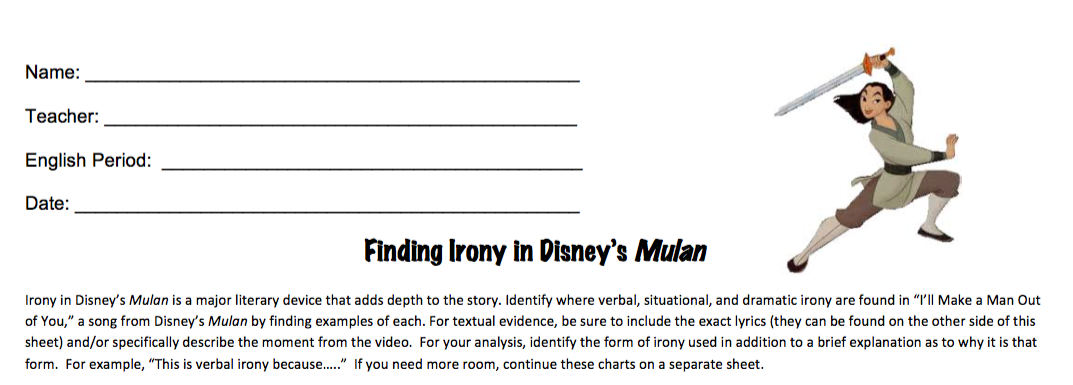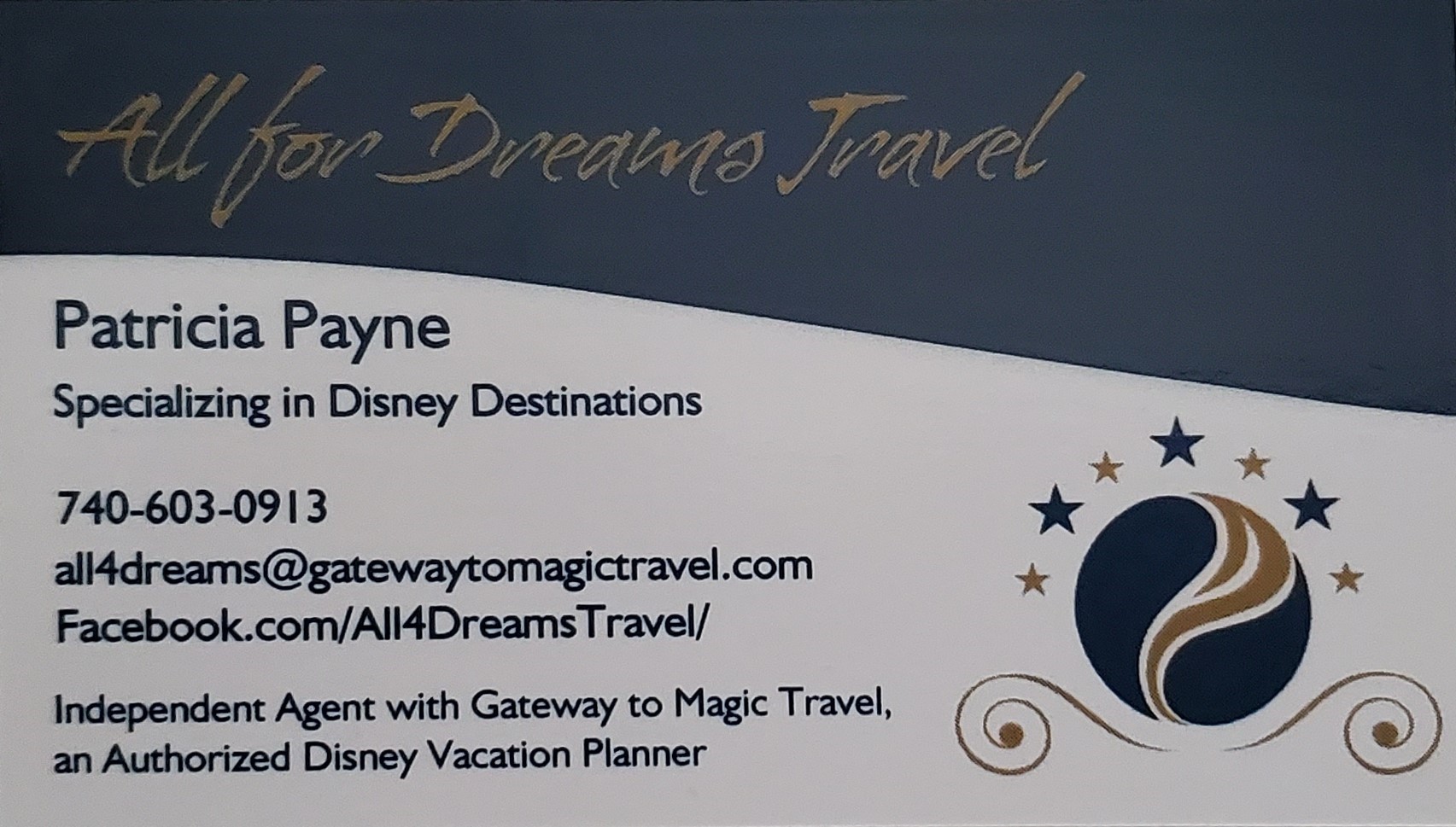by Fancy Free Diva
As you’ve probably already guessed by virtue of the fact that you’re reading these words on a Disney tips site, I am a big Disney fan. Huge. If you meet me on the street, you might not notice it, but I’m probably wearing shining silver Mickey-shaped earrings, or you might hear my Disney-themed Alex and Ani bracelets tinkling as I move. In addition to being a Disney fan, I am also an English teacher, and if my students don’t notice my affinity for all things Disney at first, they soon come to understand just how passionate I am about sharing my love for the Mouse with the world. What this often translates into are Disney-themed lessons that I bring into the classroom. If you’re looking for a way to make your engagement with Disney a little more educational, then read on!
One of my favorite lessons involving Disney involves teaching one of the most challenging concepts for students to grasp: irony. I teach in a Common Core district, and irony is specifically mentioned in the English Language Arts curriculum standards beginning in grade 8. The lessons that follow align specifically to the following Common Core grade level standards:
CCSS.ELA-LITERACY.RL.8.1 & CCSS.ELA-LITERACY.RL.9-10.1
Cite the textual evidence that most strongly supports an analysis of what the text says explicitly as well as inferences drawn from the text.
CCSS.ELA-LITERACY.RL.8.6
Analyze how differences in the points of view of the characters and the audience or reader (e.g., created through the use of dramatic irony) create such effects as suspense or humor.
CCSS.ELA-LITERACY.RL.11-12.6
Analyze a case in which grasping a point of view requires distinguishing what is directly stated in a text from what is really meant (e.g., satire, sarcasm, irony, or understatement).
Also, because both of the lessons detailed below require students to view movie clips, take notes based, in part, on what they hear, and to collaborate with peers in small group discussions, some aspects of the Common Core Speaking and Listening standards can be introduced or reinforced.
One of the issues that I’ve found, when it comes to teaching irony, is that students often confuse irony with bad luck, thanks in part to the Alanis Morrisette song that some teacher has invariably introduced them to in the past, and they often have a hard time understanding the nuance between what makes something bitingly sarcastic versus what makes a comment ring true with verbal irony. In order to help flesh out these issues for my students, I bring clips from two different Disney movies into the classroom.
We start with Frozen and everybody’s favorite snowman, Olaf. I mean, what’s more ironic than a snowman enamored with summer? I created a formative assessment to guide students through an initial viewing of the “In Summer” clip from the movie. As students view the clip, I ask them to fill out a viewing guide that lets them make notes about what they see and hear in the clip and then asks them to reflect on how what they’ve seen connects with any prior knowledge they have (from previous English classes or experiences) about irony. The viewing guide concludes by asking students to write 2 questions to help us guide our future study of the various types of irony.

This is the viewing guide I use as a formative assessment for this unit. It includes a note-taking space, a space for students to write what they think, and a requirement for students to create questions that will guide our further study and discussion of irony.
Typically, I follow the independent work of the formative assessment viewing guide with a turn and talk before moving to a whole group share. First in small groups or partnerships, then as a whole class, we process what they already know about irony (or what they think they know) and which parts of the video clips they identified as ironic. We also review the questions they wrote and I teach a short mini-lesson that covers the three different types of irony: verbal, situational, and dramatic. After the mini-lesson, we watch the video again, and I pause it at certain points to ask questions or point out illustrations of the types of irony we just discussed.
Following our conversation about Frozen, we more onto an example that is teeming with examples of all three types of irony: the “I’ll Make a Man Out of You” clip from Disney’s Mulan. Many students are already familiar with this film, but I often begin my relating a brief plot synopsis and detailing where and how this particular song fits into the larger plot events of the film.
Typically, we’ll watch this film clip twice: the first time, I ask students to just watch without writing anything. The second time, I ask them to specifically follow along with the lyrics and jot notes about the ironic lines or situations they notice. After, in small groups, students work with their notes and the text of the lyrics to complete the boxes on the front of the guide, which have been set up in double-entry journal style to help them take and make notes (one column for what they see in the text, the other column for what understandings they come to in their heads). The fabulous thing about this song and movie clip is that it includes examples of all three types of irony, so it’s the perfect lesson to help students practice applying what they know before delving into more complicated or difficult literary texts.

This is the double-entry guide that allows students to chart their textual evidence and their analysis of irony.

This side of the worksheet includes the lyrics of the song and space for students to annotate and take notes.
By the conclusion of this lesson, my students have a better grasp on the nuances of irony and can identify all three types (verbal, dramatic, and situational). Furthermore, they’ve had fun in the experience, which then makes it easier for me to continue their learning with more challenging texts, like Shakespeare’s Romeo and Juliet.
Unfortunately, most of us can’t be at Disney all of the time, so we have to do what we can to bring Disney into our lives here at home – or in the classroom. When you do get ready to book your next trip, though, please contact Patricia with All for Dreams Travel!
***Disclaimer – We at Tips from the Disney Divas and Devos hope you enjoy reading our articles, and encourage you to share any you feel may be of interest to someone else. We do ask, however, if you choose to share the photographs attached to our articles, you give credit to the photographer. Thank you for your cooperation and sharing our love of Disney!






